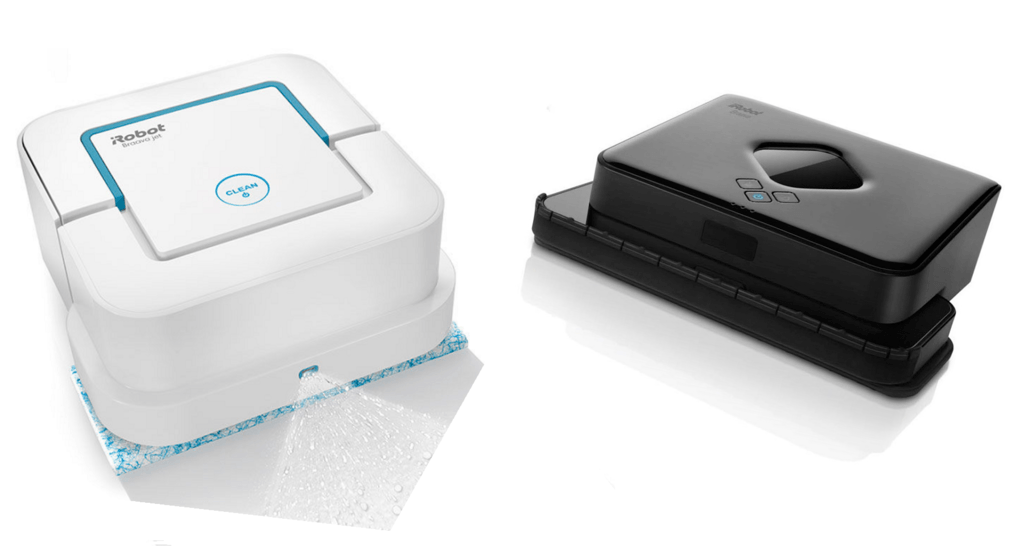If you are looking for a simple robotic mop, you have a choice to make. Two of the best models on the market right now are the Braava Jet 240 and the Braava 380t. Each one has its advantages and downfalls. Only you can decide which model is right for you.
This comparison review will help with that decision. We will look at both models and detail their features for you. Along the way, you will discover which model will best suit your needs. If you have a single room to clean, such as a kitchen or a bathroom, the Braava 240 should suffice. If you have multiple rooms or an entire home to mop, the Braava 380t might be your best option.
Contents
Differences between Braava Jet 240 and 380t
There are several differences between the models that may make or break your purchasing decision. Let’s take a look at them now.
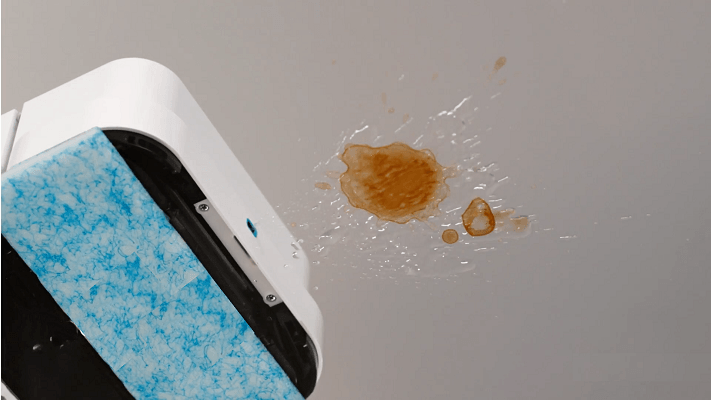
- The Braava Jet 240 uses a sprayer to wet the floor that the 380t doesn’t have.
- There is a vibrating cleaning head on the 240 that isn’t available on the 380t.
- You can utilize the iRobot Home app (firmware/software updates only) with the 240 but not the 380t.
- The 380t uses a Navigation Cube to know it’s location; the 240 has internal GPS to navigate your home.
- The Braava Jet 240 has a built-in virtual wall containment mode where the 380t doesn’t have any containment options.
- The Braava 380t uses a Nickle Metal-Hydride battery where the 240 uses a lithium-ion battery.
- The 380t is designed to clean larger spaces while the 240 is best for single room applications.
Similarities of the Two Mopping Robots
The two robots have quite a lot in common as you will see below.
- Both robots use different cleaning pads for dry, damp, or wet mopping activities.
- Neither robot will automatically recharge, requiring you to plug them in manually.
- Both robots have multiple cleaning modes and will use parallel lines for cleaning your floors.
- Each model uses iAdapt 2.0 technology for navigation and mapping.
- Unlike the Braava Jet M6, neither the 240 nor the 380t have Imprint Technologies or Wireless communications.
- Both models come with the iRobot 1-year limited warranty on both the robot and battery.
Specifications Chart
Have a look at the two machines side-by-side to see what they do and do not offer you in terms of features and specs.
| Braava 380t | Braava Jet 240 | |
| Battery | 2000mAh NiMH | 1800mAh Lithium-ion |
| Runtime | Up to 210 minutes | Up to 180 minutes |
| Recharge | About 3.5 hours | About 2.5 hours |
| Dimensions | 8.5 x 8.5 x 3 inches | 6.7 x 7 x 3.3 inches |
| iAdapt Version | 2.0 | 2.0 |
| Weight | 3.85 pounds | 2.7 pounds |
| Vacuum | No | No |
| Sweep | Yes | Yes |
| Dry Mop | Yes | Yes |
| Damp Mop | Yes | Yes |
| Wet Mop | Yes | Yes |
| Vibrating Head | No | Yes |
| Collection Bin Capacity | N/A | N/A |
| Water Reservoir Capacity | 0.12L | 0.15L |
| Entire Level Clean | No | No |
| Automatic Recharge | No | No |
| Wireless Communications | No | No |
| Mobile App | No | Yes |
| Voice Commands | No | No |
| Local Controls | Yes | Yes |
| Remote Control | No | No |
| Zone Cleaning | No | No |
| Imprint Smart Mapping | No | No |
| Imprint Link | No | No |
| Warranty | 1 Year | 1 Year |
| Price | Check on Amazon | Check on Amazon |
Comparing the Braava Jet 240 Vs. the Braava 380t
Now we will dive into the inner workings and features of the two robots as I compare them against each other to find out which model is the best. Read along and decide for yourself which robot mop is the right one for you.
Batteries and Recharging
When iRobot took over the Mint Mop and renamed it the Braava 380t, they didn’t make a whole lot of changes. One thing that stayed was the Nickle Metal-Hydride (NiMH) battery pack. This 2000mAh battery offers a runtime of up to 210 minutes in dry sweeping mode and about 150 minutes in wet mopping mode.
NiMH batteries are rechargeable for up to 1500 cycles, after which they will begin to deteriorate and stop holding a charge. Lithium-ion batteries are much better in terms of recharging, holding a charge and overall life of the battery. The Braava Jet 240 uses a Li-ion battery that weighs in at 1800mAh.
The 240 gives you about 180 minutes of runtime regardless of the cleaning mode, and the recharge time is quicker by about an hour. However, the Braava 380t is also compatible with the Turbo Charge Cradle that drops the recharge time down to about two hours.
You will have to remove the water reservoir and any wet or damp cloths prior to using the Turbo Charge Cradle, though.
Neither robot will recharge on its own. Instead, both models will return to the place they started cleaning from and shut down, waiting for you to plug them in. The 240 has a cradle of its own that plugs directly into the outlet. You simply remove the battery from the robot and place it in the charging cradle.
The 380t can use the cradle by being placed on it directly. You also have the option of plugging the power cord directly into the charging port on the battery instead of the cradle, though this option is about an hour slower.
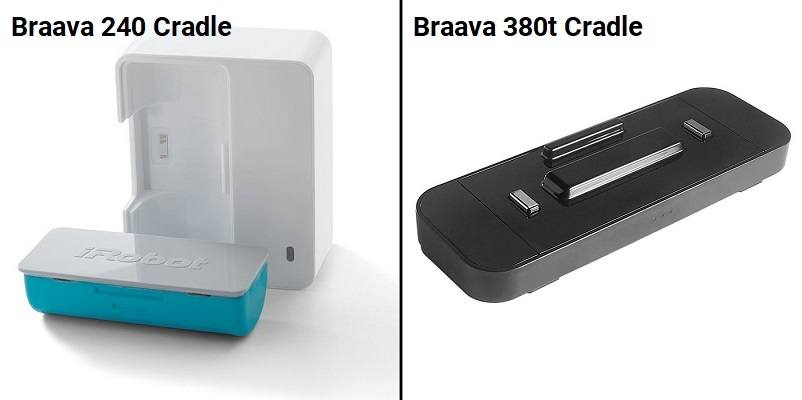
Bottom Line: This round is a tie. Both robots need to be manually recharged and offer similar runtimes based on cleaning mode selection.
Cleaning Area
The coverage area is quite different for the two robots. In fact, this is possibly the main decision making factor when considering these two models. The Braava 380t is designed to cover larger areas and multiple rooms. On the other hand, the Braava Jet 240 is designed to clean a single room such as a kitchen or bathroom.
When making your choice, you should be aware of how much hard flooring surface area you have in your home. For example, if your home is mainly wall-to-wall carpeting, with only your wet rooms (kitchen, bath, laundry, etc.) being hard flooring, then the 380t might not be the best option.
Likewise, if your home is primarily hard flooring such as laminate, vinyl, tile, etc., then the Braava 380t might be the best option for you. What you need to know is that the Braava Jet 240 will cover about 500 square feet on a single charge, depending on the number of obstacles it has to contend with. The 380t will cover up to 1100 square feet per charge.
Bottom Line: The Braava 380t has more power and can cover more area than the 240. This is only a win if you need a robot with more coverage capabilities.
Dry Sweep, Damp or Wet Mop
Both models will utilize different cleaning pads for different cleaning modes. If you want to sweep the floors, for example, then you will need to attach the dry cleaning pad.
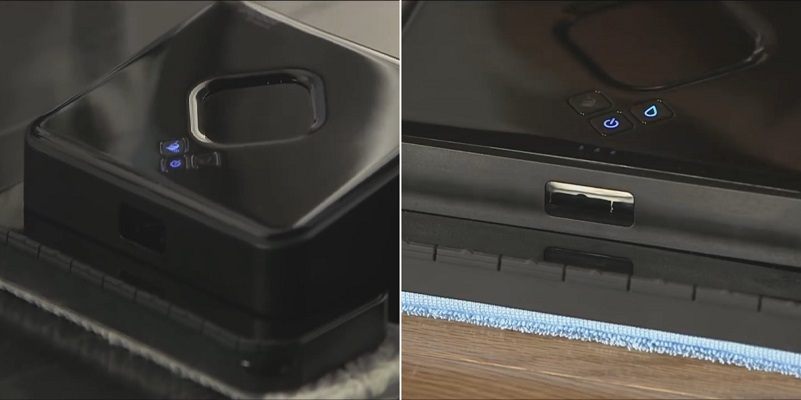
The robots handle this a little differently. On the Braava 380t, you will manually select the cleaning mode. There are three buttons on the robot. Once you place the dry cleaning pad on the tank, you put the robot on the floor and press the broom icon button.
This will prevent the water tank from releasing any water and keeping the pad dry. For a damp mop, you will select the same options and simply wet the floor with a sprayer. For an even drier mode, you can choose a wet pad and get the pad wet while still selecting the sweeping mode.
For a wet mop, you need to fill the water reservoir and attach a mopping pad. Then select the water drop icon button, so the robot knows to release the water from the tank.
On the Braava Jet 240, the mode selection is automatically detected. Each cleaning pad, dry, damp or wet, has a different color tab. There is a tab reading sensor on the bottom of the robot that will determine which color is attached and change the cleaning mode automatically.
Bottom Line: The 240 wins. Automatic cleaning mode selection avoids mistakes and confusion.
Controls
The controls for both robots are quite limited and all manual. Neither robot has wireless communications so you won’t be able to use a mobile app or voice commands. I will alert you know that the Braava 240 will connect to the iRobot Home app. However, the only available functions are to receive and distribute software and firmware updates to the robot.
[easyazon_image align=”center” height=”500″ identifier=”B00DCCYD6U” locale=”US” src=”https://smartrobotichome.com/wp-content/uploads/2019/09/51DkkIT5kSL.jpg” tag=”srh-easyazon-20″ width=”500″]Aside from this small variance, the only control options you have are local controls. The Braava 380t makes it simple by giving you three buttons. You can power on the robot or select either sweeping or mopping modes.
The Braava Jet 240 makes it even more comfortable by offering a single option, the power button. The power button does offer a second functionality, which I will cover in the next section.
Everything else for both robots is automatic. Once you power them on and send them off to clean, the robots handle the rest on their own. When they are done cleaning, both the 240 and 380t will return to the spot where you first turned them on. This prevents you from having to go searching for where they may have ended up.
Bottom Line: The 240 wins. Simple controls made even simpler by removing extraneous button options.
Containment
When it comes to containment, you won’t have a lot of options. Neither of the robots are compatible with external containment options like a virtual lighthouse or virtual wall barrier. There are some containment abilities of both robots, though.
The Braava 380t has cliff detect sensors that alert the robot if a ledge or stairs are nearby so it won’t take a tumble. They also detect the type and height of the floor. If a carpet is detected (an increase in floor height) the 380t will avoid climbing up, this includes carpeting, rugs, and runners.
Aside from this feature, though, you will have to manually contain the robot by closing doors or putting up physical barricades.
The Braava jet 240 also uses the cliff detect sensors to determine floor height and type. It also avoids carpeting, rugs, and other non-hard surfaces. However, the 240 also has an internal containment solution of sorts.
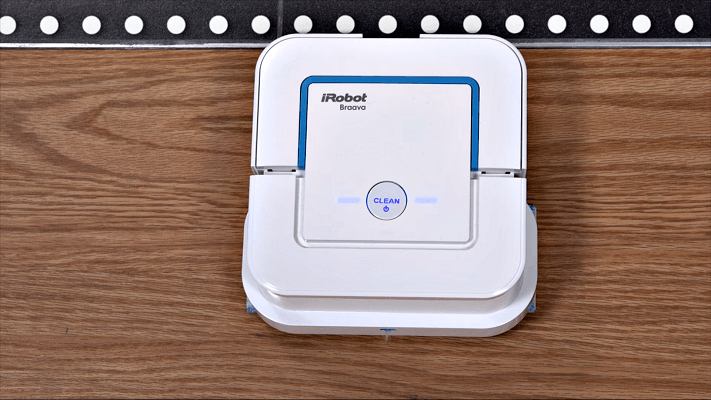
When you press and hold the power button, two blue lights will illuminate telling you that the virtual wall is activated. What happens is the robot makes a note of its starting location in the room and produces an invisible line from that point. This is all internal and done on the created map the 240 uses.
As the robot moves around the room, the line created will not be crossed. The 240 will leave from its starting position and head to the right until it encounters a wall or obstacle. From there it will move up the room and back down cleaning in parallel lines, but never crossing the imaginary line, it started on.
Bottom Line: The Braava 240 wins. Virtual containment, internal or not, is better than physical barricades.
Both the Braava 240 and Braava 380t use iAdapt 2.0 technology for navigation. However, neither of them use a camera to create a map.
The 380t uses NorthStar navigation cubes (a form of interior GPS) to know it’s location and remember where it has been. You can use multiple cubes to extend the range of the robot for more extensive cleaning areas. The rest is all done with computer algorithms and sensors.
The 240, on the other hand, doesn’t need the navigation cubes and the more advanced algorithms allow the robot to create a map in its memory. The map is formed on each cleaning cycle and followed until the room is mapped and cleaned. The sensors help by detecting walls and obstacles that are added to the map so the robot can keep its bearings.
Bottom Line: This is a tie. While the 380t requires more assistance, both will be able to find their way around your home efficiently.
Frequently Asked Questions
Let’s answer some of your most common questions about the two robots. If you have other questions or concerns, feel free to use the comment section below.
Q. What is the warranty period for the Braava robots?
A. Both the 380t and 240 come with a 30-day money-back guarantee followed by a limited 12-month warranty that covers both the robot and the battery. You can find all the specific details about what is and isn’t covered, as well as the claim process on the iRobot website.
Q. How do I contact iRobot customer service?
A. The fastest method is to call their toll-free number at 1-800-727-9077. However, if you prefer email or a live chat through your web browser, you can find the correct addresses or links for your particular concern (technical help or general sales inquiries) through the customer service page.
Q. Where is the best place to buy a Braava mopping robot?
A. The best option is to purchase through Amazon. The customer service and warranty claims are easier to manage through Amazon. You will also be able to use the digital receipts on the Amazon website for your proof of purchase without having to worry about where your paper copy ran off to.
Q. Will either model attempt to clean the rugs on my floors?
A. It is easy to say no. Both robots are adept at detecting carpeting, rugs, and floor mats. They are programmed to avoid such flooring surfaces. However, the truth of the matter is that not all carpeting is the same. It is impossible to program a robot for every flooring type it may or may not encounter. As such, thinner rugs and floor mats may not trigger the carpet sensors, and the robots may attempt to climb on top of them.
What I Like About the Braava Jet 240
- Vibrating cleaning head scours the floors to get stuck on grime and dirt.
- Three cleaning modes automatically chosen based on the attached pad type.
- Ideal for smaller homes and single rooms.
What I Like About the Braava 380t
- Able to clean more extensive floor plans with extra navigation cubes.
- Won’t climb on carpeting or rugs.
- Long battery life for extended cleaning times.
In Conclusion
The choice of which robot mop to purchase comes down to a few simple decisions. Each option will depend solely on your flooring situation and what you expect from the robot.
For smaller homes with hard flooring only in wet rooms such as a kitchen or bath, the Braava Jet 240 is the best option. It is affordable, compact, and will scour grime-covered floors with ease.
If you have mainly hardwood flooring throughout your home, you will find that the Braava 380t is a better option. Instead of cleaning one room at a time, you can let the robot go and do its job without the worry of when and where it will run out of steam.
